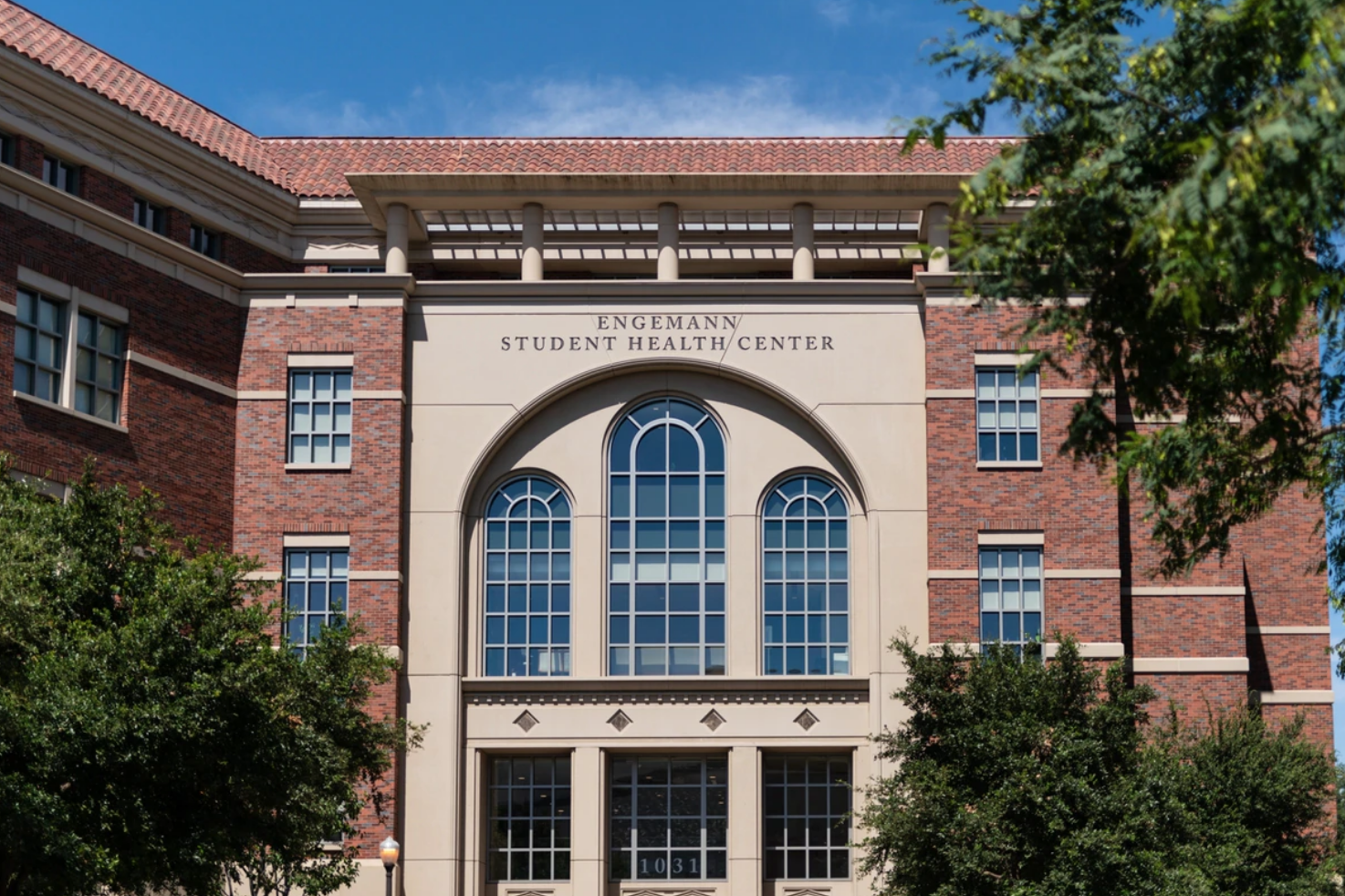Engemann Health Center. (Photo by Ling Luo)
The university created a Task Force and is planning to introduce new programs to better address the results of the survey.
There has been an overall decrease in the percentage of USC undergraduate students who are knowledgeable about sexual assault and sexual misconduct topics, how to reach out for help and how to report cases, according to a university campus climate survey released Tuesday.
The 2019 Association of American Universities Campus Climate Survey on Sexual Assault and Misconduct garnered the participation of 8,381 USC undergraduate, graduate and professional students last spring.
Since AAU’s first campus climate survey in 2015, USC has joined 32 other institutions of higher education such as Stanford University and Harvard University in inviting students to complete the questionnaire to help create a safer learning environment.
This year’s results showed that the number of undergraduate students who know how sexual assault and sexual misconduct are defined at USC decreased from 30.8% to 26.2% within the past four years. In addition, the data displayed an estimated 8 percentage points decrease on undergraduate students’ knowledge of where to get help on campus if one experiences sexual assault or sexual misconduct, and where to report a case.
Despite the fact that USC undergraduate students generally have more resources and programs offered on campus, according to USC Chief Health Officer Sarah Van Orman, the survey reflected a decrease while the graduate students showed an increase in all three knowledge questions. The national sample showed an overall increase as well. That is the only area USC differs from the national survey result, according to Van Orman.
“That’s an area that we want to look at closely to try to understand why that difference [between the USC and national results] happened on our campus,” Van Orman said. “We really want to try to, over the coming months, talk with students better understand that so that we can make sure that we close that knowledge gap.”
This year’s survey results also showed a slight increase in the percentage of students who experienced sexual assault and misconduct over the years. Nationally, the overall prevalence has risen by about 2 to 3 percentage points since 2015.
“Unfortunately, both at USC and nationally, there wasn't really much change between 2015 and 2019,” Van Orman said.
Van Orman explained that one new university intervention is the Affirmative Consent workshop, which was introduced this fall semester, for all incoming freshmen. She added that all 4,000 freshmen were expected to complete the training session, and 1,500 students have finished the workshop so far. The workshop was designed to “reinforce” the message from the online training. Other efforts include the “Bringing in the Bystander” student leader training, which teaches how to identify situations and to “say something, do something.”
The survey also noted that 31.5% of the undergraduate students reported sexual assault and misconduct incidents to an agency or organization, an increase of 17.6 percentage points from 2015. Among undergraduate students, the increase is 18.5 percentage points.
“While we’re concerned about that decline in knowledge [of recourses], we’re also really happy that we’re seeing more students that are reaching out to on-campus resources,” Van Orman said.
However, for sexual harassment, 84% of the undergraduate students and 87.4% of the graduate students did not report the incident. That data did not change much since 2015 and is similar to the national level, according to Van Orman.
In the reports, Van Orman highlighted that 15.6% of graduate or professional students said they did not report a sexual harassment incident because they “feared negative consequences.”
“That's very concerning because we worry then those students are concerned about academic consequences and about maybe faculty of your classmates,” she said. ”So that's a number that, to me, seems very concerning.”
It was also shown that USC students who identified as transgender, queergender, gender non-conforming and not-listed have disproportionately experienced sexually harassing behaviors, and that behavior was much more likely to “created an intimidating, hostile or offensive social, academic or work environment.”
“I think that these are the kinds of data points that we really need to take a look at and to understand that we probably need more specific dedicated resources to both support students that might be experiencing that in that community, but also to think about what are we doing in education and prevention to make that not okay on our campus,” Van Orman explained.
To better address the issues of the report, Provost Charles Zukoski charged the AAU Task Force in September, according to Van Orman.
Members of the Task Force include Vice President for Student Affairs Winston Crisp, Van Orman, Title IX Coordinator Gretchen Means and representatives from Undergraduate Student Government and Graduate Student Government.
The Task Force hosted town hall meetings at USC’s University Park Campus and Health Sciences Campus Tuesday for all students, faculty and staff. The meetings were held to answer questions and to listen to the USC community’s concerns over the released survey results.
“Our Task Force is charged with completing and preparing a report of recommendations,” Van Orman said. “I really think of that report as our roadmap on campus for the next three to five years.”
correction: a previous version of the story did not clearly differentiate the increase in the “prevalence” of sexual assault and students who “reported” the incidents. The previous version also incorrectly stated that “87.4% of the graduate students reported the incident” instead of “did not report the incident.”

